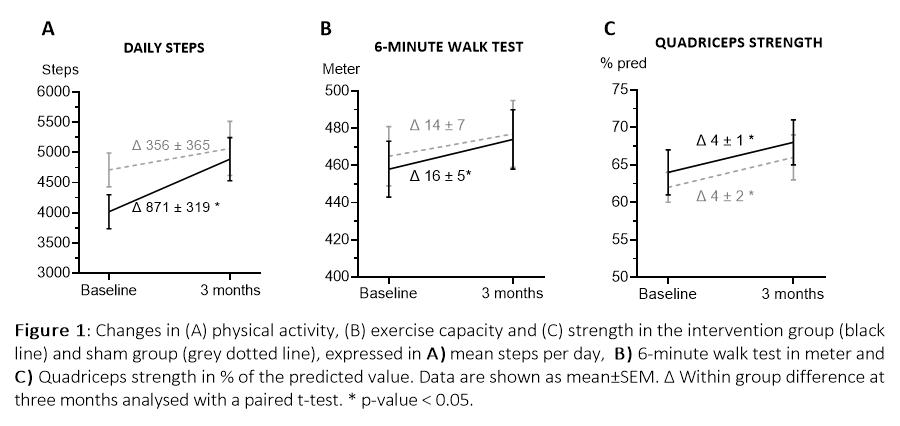Abstract
INTRODUCTION Patients after lung transplantation (LTx) are often inactive. We investigated the effectiveness of a 3-month physical activity (PA) telecoaching program in LTX recipients compared to a sham intervention.
METHODS Out of 108 LTX recipients, 90 were inactive (<7500 steps/day measured with Dynaport Movemonitor for one week) and randomized into the intervention group (IG) or sham group (SG). Both groups received a pedometer (Fitbit Inspire) and application for 3 months. The IG received personalized adaptive goals and coaching calls. The SG had a fixed PA goal. PA, exercise capacity (6-minute walk test (6MWT)) and quadriceps strength (QS) were measured at baseline and after 3 months. ANCOVA was used to compare between-group changes (daylight as covariate) and a paired t-test for within-group changes.
RESULTS Both groups were comparable at baseline (IG n=48, SG n=42; overall mean±SEM 61±1 year; 50% male; FEV1 94±3% pred; DLCO 53±1% pred; 20±2 months since LTx; 6MWT 445±11m; QS 62±2% pred; 4115±1847 steps/day for IG and 4502±1622 steps/day for SG, p=0.30). There were no between-group differences in change in PA (360±488 steps/day, p=0.46), 6MWT (4±9m, p=0.69) or QS (0.1±4 % pred, p=0.97). Within-group changes are shown in fig 1.
CONCLUSION An intensive 3-month telecoaching intervention improved physical activity compared to baseline, but not more than a sham coaching intervention in LTx recipients.